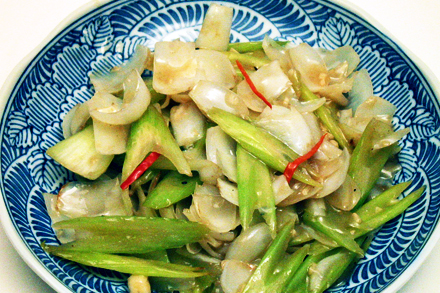
I can’t believe it’s been more than a month since my last post! I’d just completed a major system development project for a client at work. The delivery of this system had taken over my entire attention. Perhaps some of the technologist readers out there might sympathize with me and I ask for your forgiveness. As soon as the project was over I went to Chinatown and was excited to find edible lily bulbs (百合) in season. I was itching to get back to my kitchen.
You may not know this but lily bulbs are widely cultivated for food in Asia especially in China, Korea and Japan. In China they are grown in both the northern and central regions. Although there are many species of lily with edible bulbs, the ones most commonly grown for food in China are Lilium brownii, Lilium dauricum and Lilium pumilum. Specifically bulbs from Lilium brownii, which has beautiful white trumpet shaped flowers, are the ones usually available in the markets. For years only the dried bulb sections were available from China. But now in Chinatown you can obtain fresh lily bulbs in season from spring through late summer. They come vacuum-sealed in plastic and can be kept fresh unopened for a few weeks in the refrigerator.
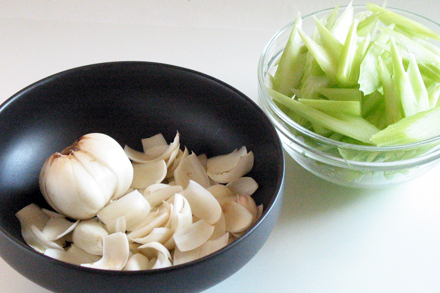
Lily bulbs (known as baihe in Chinese) are white skinless ball shaped corms, which contain starchy scale like sections. They have a slightly perfumed smell, crunchy texture and refreshingly sweet taste. The Chinese use them in cold dishes, stir-fries and soups. They are considered yin in character and have a cooling effect to the body, thus making them ideal for summer consumption.
In addition to being used as a food item, lily bulbs have many medicinal uses. Most commonly they are used as an ingredient to make expectorant, which can help relieve symptoms of coughing, asthma or lung congestion.
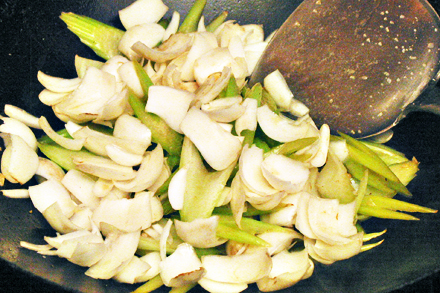
Widely grown along the Yangtze River and its delta region, lily bulbs are used frequently in the local cooking of Shanghai, which is right in the center of the delta region. It was there that I first discovered fresh lily bulbs in a stir-fry dish with celery. A light and yet flavorful dish with a hint of flowery fragrance. Here I’d like to introduce you to Stir-fry Lily Bulbs and Celery. I hope you enjoy this dish as much as I did.
-
Stir-fried Lily Bulb and Celery (西芹百合)
-
- Preparation time: 15 minutes
- Rapid cooking time: 15 minutes
-
- 2 cups (12 ozs.) lily bulbs separated (百合)
- 2 cups (12 ozs.) sliced celery
- 2 tablespoons vegetable oil
- 1 tablespoon minced garlic
- 1/4 cup Shaoxing cooking wine
- 1 teaspoon salt
- 1/4 teaspoon ground white pepper
- 1 red chili thinly sliced (optional)
- 1 teaspoon cornstarch mixed with 1/4 cup of water
-
- Separate the sections of the lily bulbs by slicing off the top and the bottom of the bulbs. You may need to rinse off any dirt that’s lodged between the sections. Put the sections in a bowl and set aside. Slice the celery on the bias into slivers and set aside.
- In a wok heat vegetable oil until it just reaches the smoking point. Add the garlic to the wok and quickly stir-fry until fragrant, about 30 seconds. Add the celery and the wine to the wok. Continue to stir-fry for about one minute. Cover the wok and cook for about 2 minutes. If the liquid evaporates too quickly then add 1/4 cup of water to the wok. Add the lily bulbs, salt, white pepper and the optional red chili if desired. Stir-fry for another minute then thicken the sauce with the cornstarch and water mixture. Plate and serve immediately.



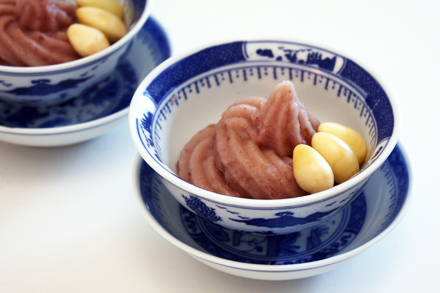
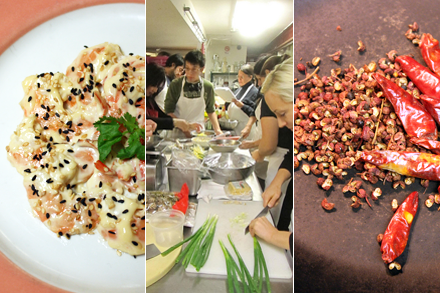
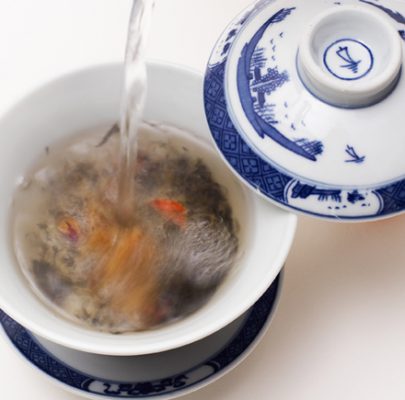
hey stop eating the flowers! Looks and sounds delicious as usual – when are we going on our shopping trip?
We’ve never tried cooking with them before. And I do definitely need a lot of yin. Will try one of these days.
I’ve only had lily bulbs in soups and dessert soups, so this is new to me! Will have to keep my eyes peeled for some in Chinatown.
Thanks for the info. I had these for the first time in China a couple of years ago. We were there in summer and it seemed lily bulbs were served everywhere we went. They are texturally interesting and easy to make! I’ll have to look around to see if they are sold on the west coast.
there’s a dish that’s like this but has smoked bacon and fried bread in it….. really good.
Thank you for singing the virtues of the lily bulb! Just made a soup of silkie chicken and lily bulb…rich and delish!
Great Idea! I have a wholesale Plant Nursery & farm and will be growing these lillies to sell at the Markets and throughout Australia I will enjoy promoting an old traditional asian food and introduce to western culture as “flower to food” thankyou again 🙂
Vivienne, I live in Germany and I’m trying (without much luck) to find a source for Lilium brownii bulbs to plant in my allotment garden. Have you been able to find a source for the bulbs yet?
Lily is also good for your lungs. I have COPD and I was told by my Chinese doctor to eat a lot of lily and fungus.
where does one purchase lily bulbs?
Fresh lily bulbs can be found in Hong Kong Supermarket on Hester Street at the corner of Elizabeth in NYC Chinatown, or at the produce market at 139 Mott Street. They are in season about now and throughout the summer. They are sold vacuum packed in clear plastic wrapper. If you can’t find fresh lily bulb you can get dried sections of the bulbs in just about any dried food markets in Chinatown including also Hong Kong Supermarket.
Had this in the Hard Wok Cafe in Liverpool last night and very nice too. Despite its title the Cafe is very authentic and well worth a visit if you are in Liverpool.
Will definitely try this recipe though I guess fresh ones will be hard to find at the moment.
why is the fresh lily bulb so bitter ? It was given by a china relative.